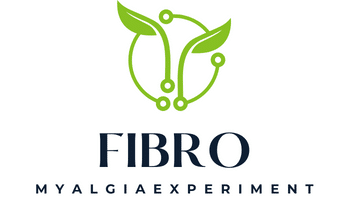When it comes to bread, few varieties can match the complex flavor profile of a good sourdough. This loaf, distinguished by its tangy flavor, chewy texture, and crisp, crackling crust, owes its unique characteristics to the fermentation process. This article will guide you on how to utilize fermentation to enhance the flavor of your homemade sourdough bread.
Understanding the Basics of Sourdough Bread
Before embarking on your baking journey, it’s essential to understand the basics of sourdough bread. One of the key components of this type of bread is the sourdough starter, a fermented mixture of flour and water that serves as a natural leavening agent. The starter introduces wild yeast and beneficial bacteria into the dough, which are crucial for the fermentation process.
En parallèle : How to Make a Gourmet Fresh Peach Bellini with Prosecco?
In contrast with commercial yeast bread recipes, sourdough bread relies on longer fermentation times. This process not only contributes to its distinctive sour flavor but also affects the texture and shape of the loaf. The bulk fermentation stage, which occurs after mixing the dough, is a crucial step in achieving a well-structured loaf.
Creating Your Sourdough Starter
The first step in baking sourdough bread is creating the starter. This mixture of flour and water serves as a home for wild yeast and bacteria, which are responsible for fermentation. This process can take up to a week, and the starter will need regular feeding during this time.
A voir aussi : What’s the Key to Crafting a Perfect English Afternoon Tea Scone with Clotted Cream?
To begin, combine equal parts flour and water in a large jar or container, ensuring it’s large enough to accommodate the starter’s growth over time. Stir the mixture until it forms a thick paste, and then cover the container with a cloth or plastic wrap, allowing it to breathe. Place the container in a warm area with a stable temperature, ideally between 20-25°C (68-77°F).
Each day, remove half of the starter and replace it with an equal amount of flour and water, stirring until fully combined. This is known as "feeding" the starter. After several days, the mixture should start to bubble and emit a sour aroma – a sign that fermentation is occurring.
The Art and Science of Fermentation
Once the sourdough starter is ready, it’s time to delve into the wonderful world of fermentation. Fermentation in sourdough making involves the metabolic action of yeast and bacteria on the dough’s sugars, producing carbon dioxide gas and alcohol. This gas gets trapped in the dough, causing it to rise, while the alcohol contributes to the bread’s flavor.
Fermentation time can vary depending on several factors, including the temperature, the ratio of water to flour, and the age of your starter. This process typically takes between 3 to 5 hours, but it can take longer in cooler temperatures.
During this time, it’s important to perform a series of folds on the dough to redistribute the yeast and bacteria, and to help strengthen the gluten structure. This process typically involves pulling a portion of the dough up and folding it over itself, rotating the dough each time.
Baking the Perfect Sourdough Loaf
After the dough has finished fermenting, it’s time to bake. Baking is a critical phase where the dough transforms into a beautiful, flavorful loaf of bread.
Prior to baking, the dough will need to undergo a final proofing stage. This usually takes place in a banneton or proofing basket, helping the loaf maintain its shape. The proofing time can range from a couple of hours to overnight in the fridge, depending on your schedule and preference.
When ready to bake, preheat your oven to a high temperature, typically around 230-250°C (450-480°F). If you have a baking stone or Dutch oven, now is the time to use it. These tools can help achieve a perfect crust by retaining heat.
Before placing the bread in the oven, make a few shallow slashes on the top of the loaf. This technique, known as scoring, allows the bread to expand in the oven without tearing.
Bake the bread for approximately 20-25 minutes with the lid on (if using a Dutch oven), then remove the lid and bake for an additional 20-30 minutes, or until the loaf is a deep golden brown and sounds hollow when tapped on the bottom.
Perfecting Your Sourdough Recipe
While the basic sourdough recipe involves simple ingredients – flour, water, and salt – there’s plenty of room for experimentation. You can play around with different types of flour, adjust the hydration levels, or experiment with longer fermentation times to develop more intense sour flavors.
Remember, sourdough bread making is as much an art as it is a science. It involves understanding the ingredients, mastering the process, and, most importantly, embracing the unpredictability that comes with working with wild yeast and bacteria. With patience, practice, and a bit of trial and error, you’ll be able to bake a sourdough loaf that matches or even surpasses your favorite bakery’s offerings.
Adjusting Fermentation for Different Sourdough Flavors
If you’ve mastered the basic process of making sourdough bread, you can now adjust the flavor profile by manipulating the fermentation time. The length of the bulk fermentation can greatly affect the flavor of your sourdough.
A shorter fermentation time can result in a milder, less tangy flavor, while a longer fermentation time can enhance the sour flavor. This is because the lactic acid bacteria in the sourdough starter produce more acetic acid, which contributes to the tangy taste, over a longer fermentation period.
To experiment with fermentation times, you might start with your standard sourdough recipe and alter the fermentation duration. If your recipe calls for a fermentation time of 4 hours at room temperature, and you want a more pronounced sour flavor, you could extend the fermentation to 6 or even 8 hours.
Remember, temperature affects the rate of fermentation too. A warmer environment accelerates fermentation, while a cooler one slows it down. If you’re fermenting your bread dough in a cooler place, you may need to extend the fermentation time to achieve the desired flavor and open crumb structure.
Keep in mind that there is a limit to how long you can extend the fermentation. Over-fermentation can lead to a dough that is difficult to shape and a bread with an overly sour flavor. It can also result in a dense loaf with a closed crumb rather than the desired open crumb structure.
Using Different Flours for Unique Flavor Profiles
To further enhance the flavor of your sourdough, you can experiment with different types of flour. While bread flour is the most commonly used for sourdough due to its high protein content, other types of flour can contribute unique flavors and textures to your bread.
Whole wheat flour, for example, can give your sourdough a heartier flavor and denser texture. Rye flour can add a distinct earthy taste, while spelt flour can impart a sweet and nutty flavor. Mixing different types of flour can also create a sourdough with a more complex flavor profile.
When using a new type of flour, you may need to adjust the hydration level of your dough as different flours absorb water at different rates. For instance, whole wheat flour tends to absorb more water than bread flour, so you might need to increase the amount of water in your recipe to achieve the right dough consistency.
As with fermentation times, make sure to experiment and take notes. Over time, you’ll understand how each type of flour affects the final product, giving you more control over your sourdough’s flavor and texture.
Conclusion
Baking sourdough bread is a rewarding process that allows for a great deal of creativity. Through understanding and manipulating the fermentation process, you can greatly enhance the flavor of your sourdough, transform its texture, and even shape its appearance.
Remember, fermentation is a delicate balance between time, temperature, and the most vital ingredient, your sourdough starter. Tweaking these elements can take your bread from ordinary to extraordinary, introducing a depth of flavor that’s hard to beat.
Likewise, using different types of flour can introduce an array of unique flavor profiles, from hearty whole wheat to sweet spelt. By experimenting with these factors, you’ll eventually create a sourdough bread recipe that’s entirely your own, embodying your preferences and baking style.
Embrace the journey of bread baking as an opportunity to learn, experiment, and delight in delicious results. Whether you’re striving for a robust sour flavor, an open crumb, or a crusty exterior, know that each batch of dough will bring you one step closer to your perfect loaf of sourdough bread.






